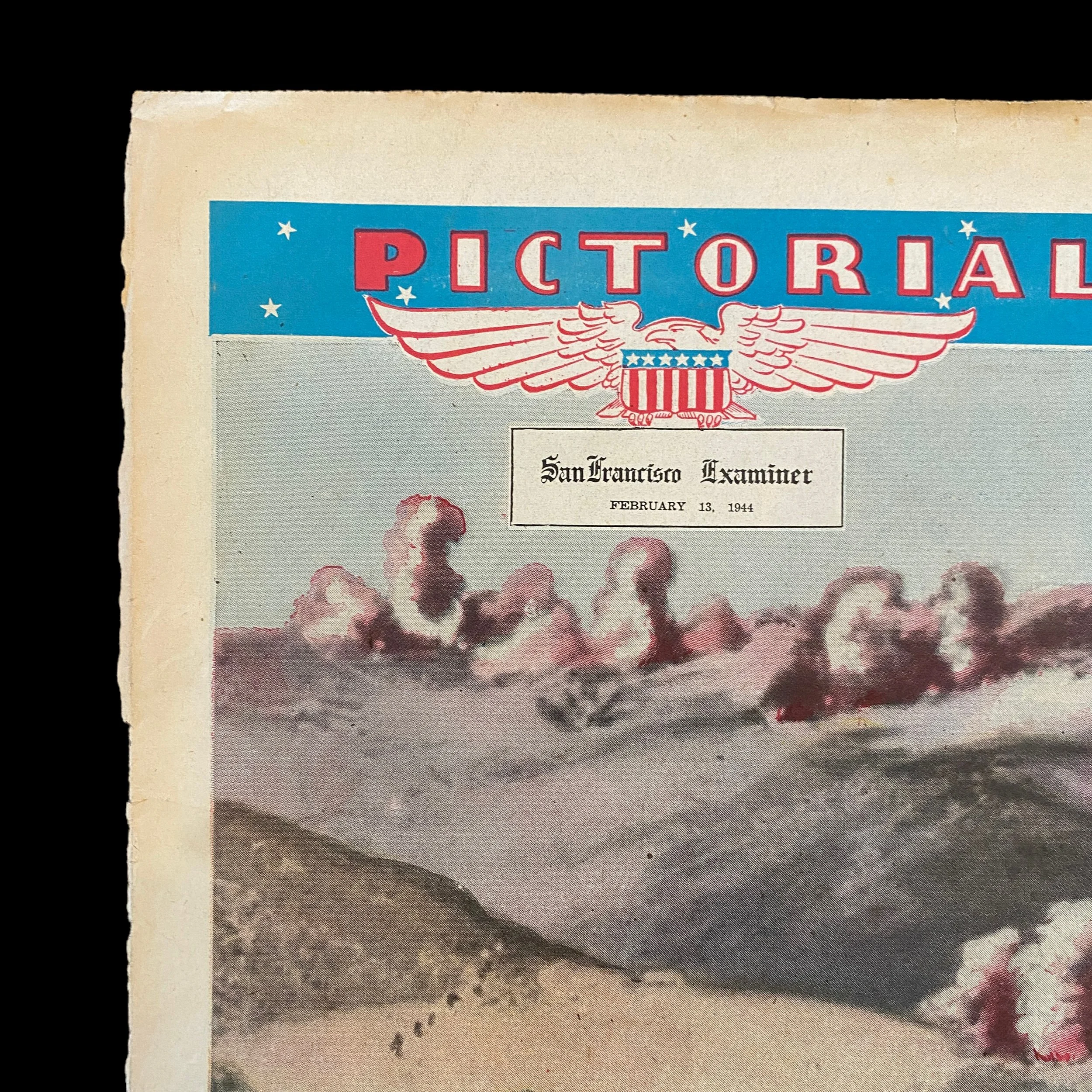WWII 1944 Invasion of Italy “DEATH STRUGGLE IN CENTRAL ITALY” DOUBLE SIDED Headline














WWII 1944 Invasion of Italy “DEATH STRUGGLE IN CENTRAL ITALY” DOUBLE SIDED Headline
Comes with hand-signed C.O.A.
This incredible and museum-grade original WWII newspaper headline is a remarkable piece of World War II history. Because of the delicate nature of the paper, many of these original newspaper headlines do not exist anymore. For the mothers, fathers, and other family relatives of American World War II servicemen, this was one of the first ways that they were able to hear about what was happening in the European Theater. This newspaper headline comes from a large collection of WWII front page headlines that was saved by the mother of a WWII serviceman in the ETO. She saved every headline from the Allied Invasion of North Africa, Sicily, Italy, France, and Southern France. These full-page headlines and newspapers span from 1941-1945 and remain in near-mint condition.
This original headline newspaper is in remarkable condition for its age and would look amazing framed behind glass and hung on a wall. This would make a special addition to any WWII or history collection!
Importance of Newspapers and War Correspondents During WWII:
World War II was a time of unprecedented global upheaval and the rise of the modern world. As the war raged on, newspapers, news photographs, and war correspondents played a critical role in shaping public opinion, documenting the realities of the conflict, and providing a window into the lives of soldiers and civilians caught up in the turmoil. In this essay, we will explore the significance and importance of these media in the context of World War II.
Newspapers were the primary source of news and information for people during the war. They provided a daily update on the latest developments on the battlefield, as well as the political and economic impact of the war on the home front. Newspapers served as a vital tool for both propaganda and counter-propaganda, with governments and military authorities using them to sway public opinion in their favor. In many cases, newspapers were censored by the government to ensure that information was not leaked to the enemy. Despite these restrictions, journalists often found ways to circumvent censorship and report on important events.
One of the most significant features of newspapers during the war was their ability to mobilize public support. Newspapers often published editorials and opinion pieces that called for sacrifice and perseverance in the face of the war effort. They also played a crucial role in raising funds for war bonds and other forms of financial support. In doing so, newspapers helped to create a sense of national unity and purpose, bringing people together in support of a common cause.
Along with newspapers, news photographs were a powerful tool in shaping public opinion during World War II. In an era before television, photographs provided a visual record of the war that could be seen by millions of people. They depicted the human cost of the conflict, capturing the faces of soldiers, civilians, and victims of the war's atrocities. News photographs also played a critical role in shaping perceptions of the enemy, with photographers often portraying enemy soldiers as dehumanized and evil.
Perhaps the most significant contribution of news photographs during World War II was their ability to bring the war home to people in a way that words alone could not. They captured the destruction wrought by the war on cities and towns, as well as the personal toll it took on soldiers and civilians alike. This helped to foster a sense of empathy and understanding among the public, and inspired many to contribute to the war effort in whatever way they could.
War correspondents, meanwhile, provided a direct link between the war and the public. They were the eyes and ears of the people, reporting from the front lines and offering a first-hand account of the realities of the conflict. Correspondents often put themselves in harm's way to get the story, accompanying troops on dangerous missions and risking their own lives to bring back vital information. In doing so, they provided a valuable service to both the military and the public, shedding light on the conditions faced by soldiers and civilians alike.
One of the most significant contributions of war correspondents during World War II was their ability to challenge official narratives. They provided a critical perspective on the war, often uncovering stories that the military and government would have preferred to keep hidden. This helped to promote transparency and accountability, and ensured that the public had access to accurate information about the war.
In conclusion, newspapers, news photographs, and war correspondents played a critical role in shaping public opinion during World War II. They provided a vital link between the war and the public, documenting the realities of the conflict and fostering a sense of national unity and purpose. While their contributions were often influenced by government censorship and propaganda, they nevertheless provided a valuable service to the public and helped to shape the course of the war. Their legacy continues to this day, with newspapers, photographs, and war correspondents serving as a vital source of information and insight in times of conflict and crisis.